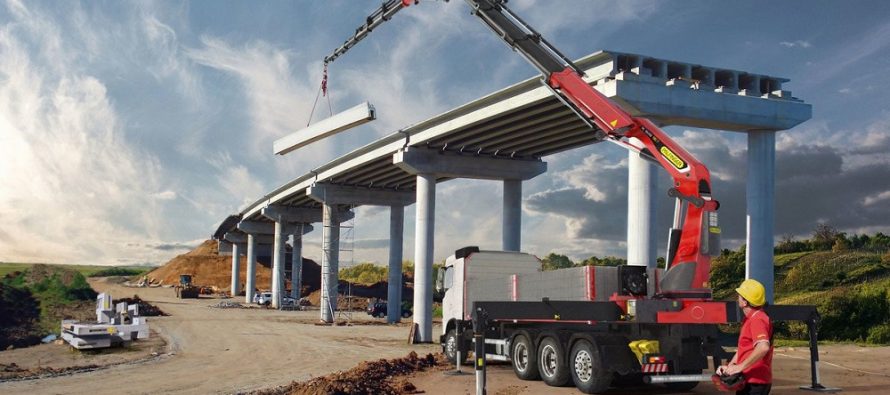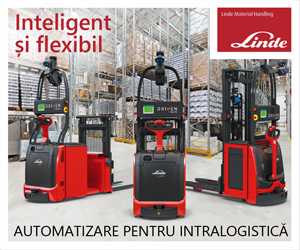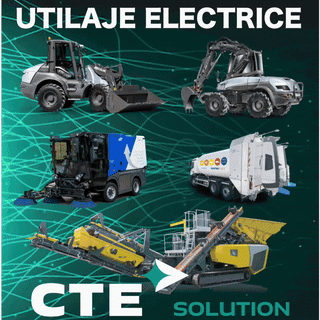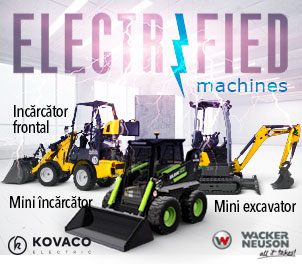New Palfinger crane models: PK 55.002 TEC 5 and PK 58.002 TEC 7

Related Articles
Palfinger is presenting two new crane models in the 60 meter-tonne segment. The range of available comfort functions combined with the new design makes it possible to work more efficiently and precisely.
Palfinger is setting new standards in the 60 meter-tonne class with its two new crane models, the PK 55.002 TEC 5 and the PK 58.002 TEC 7. Both cranes feature an impressive outreach of 33.7 meters with a fly jib. The maximum lifting moment for the PK 55.002 TEC 5 is 53.1 meter-tonnes and, for the PK 58.002 TEC 7, 55.5-tonne meters. This makes it considerably easier to lift heavy loads such as steel beams. ‘The PK 55.002 TEC 5 and PK 58.002 TEC 7 crane models represent a completely new design in the 55 to 60 meter-tonne segment. This goes for both the steel construction and the electronics,’ explains Michael Völker, head of Product Management for cranes.
The next level
The complete Palfinger TEC-range features a functional design. Covers are not just elegant, but well-thought-out, down to the very last detail. The internal hose guide via the crane column and main boom offers enhanced protection against mechanical damage and the elements. TEC cranes are well known for their variety of features and comfort functions, such as their tried-and-tested Dual Power Systems for the utilization of full lifting power in fly jib mode, the DPS-Plus for TEC 5 and DPS-C for TEC 7, and the HPSC-Plus modules LOAD, GEOM and FSTAB for improved stability in every situation. Exactly these functions in combination with the sophisticated design make the new range and especially the two new models in the 60 meter-tonne class stand out from the crowd.
Stable till the boom tip
Mechanical extensions are now available not only on the fly jib but also on the TEC crane itself. These can be integrated into the overload protection system in combination with the MEXT function. This enables the PK 58.002 TEC 7 to achieve optimal performance in its daily work.
For the new crane models, there are two P-profile fly jibs on E, F and G extensions: the PJ150 and PJ090. The PK 58.002 TEC 7 F achieves outstanding performance in combination with the PJ150 E. This allows the crane operator to lift weights of more than one tonne to heights of just over 20 meters thanks, in part, to the DPS-C. The lightweight design of the polygonal profile (P-profile) ensures that the extension boom system remains very stable till the boom tip despite its low dead weight so that it can be used to complete work more efficiently and safely – be it in the structural or civil engineering segments, or in city centers, where precision and finesse are required.
Flexibility and an edge in expertise
Thanks to Power Link Plus, tasks such as reaching through low door openings and working inside buildings no longer present a challenge. Power Link Plus is a double-linkage system that increases the crane’s lifting power thanks to the special connection between the knuckle boom and main boom and the main boom and crane column. The knuckle boom can also be over-extended by up to 15° and offers the crane operator even more potential applications with the PK 55.002 TEC 5 and PK 58.002 TEC 7.
With the WEIGH function on the TEC 7 model, it is particularly quick and easy to weigh loads at the site of deployment. Crane operators weigh the load directly on the crane so that they know exactly where they can lift it. This saves time as it eliminates the potential need to move the truck. WEIGH also saves the last ten weighing operations automatically and can add them up.
In the TEC-range, the return oil utilization system can be turned on and off manually to increase efficiency. The return oil utilization system uses a load-holding valve to divert the oil from the piston rod end to the pressure line instead of the tank. The resulting oil flow increase ramps up the extension speed considerably. The special design of the cylinders also increases the speed. By contrast, the crane operator can turn off the return oil utilization system if a task requires enhanced power rather than increased speed.







